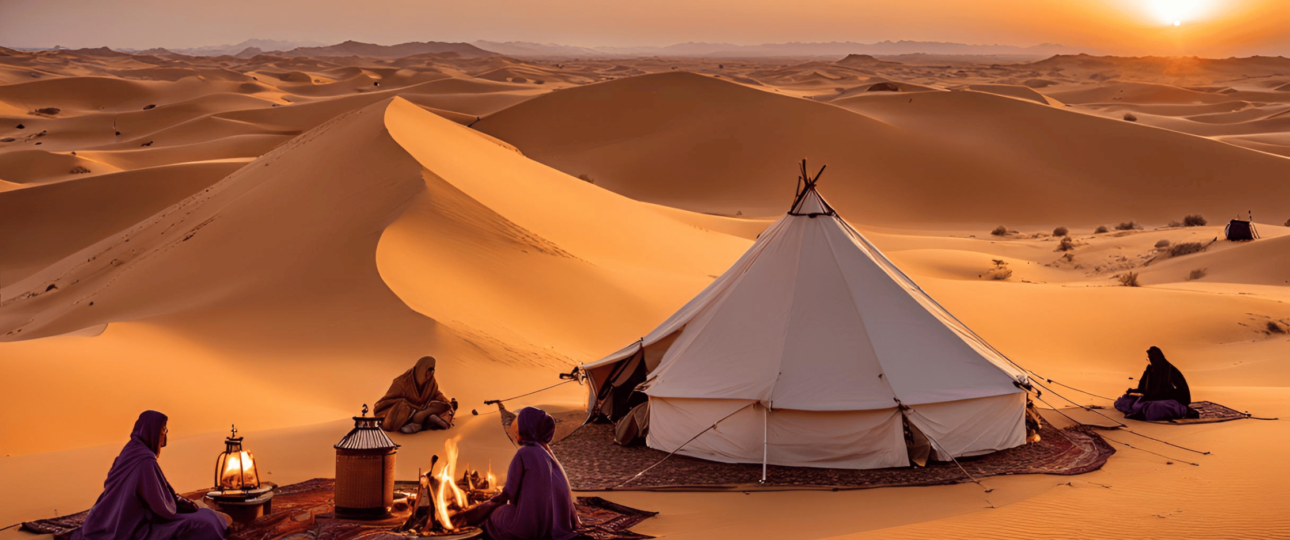What Makes Desert Safaris Unique?
History and Culture of Desert Safaris are more than just an adventure; they are a journey through time, culture, and nature. Picture golden dunes stretching endlessly under a crimson sunset. Feel the adrenaline of dune bashing or the calm serenity of camel rides. This blend of thrill and tradition makes desert safaris a one-of-a-kind experience. But have you ever wondered about the history and culture behind these adventures?
The Blend of Adventure and Tradition
Desert safaris are not just about excitement but also about connecting to desert traditions. From Bedouin heritage to traditional feasts under starry skies, these experiences bridge the gap between adventure and cultural immersion.
Origins of Desert Safaris
Early Nomadic Life in the Desert
Thousands of years ago, nomadic tribes like the Bedouins roamed the deserts. For them, the harsh landscape was a home navigated with unparalleled skill and resilience.
Survival Skills Turned into Exploration
What started as survival—tracking water, taming camels, and navigating dunes—eventually evolved into a source of inspiration. These skills laid the foundation for modern desert safaris.
The Transition from Necessity to Leisure
As trade routes expanded, deserts became pathways for cultural exchange. Over time, adventurers began exploring the dunes for leisure, giving rise to the desert adventure we know today.
The Role of Desert Safaris in Local Culture
Bedouin Heritage and Influence
The Bedouin heritage forms the backbone of desert safaris. From brewing aromatic Arabic coffee to crafting intricate carpets, these traditions enrich every safari experience.
Camel Rides and Their Historical Significance
Known as the “ships of the desert,” camel rides are a highlight of every safari. This activity symbolizes resilience and connects tourists to centuries-old traditions.
Storytelling Around the Campfire
The magic of desert safaris comes alive around the campfire. Bedouin storytelling offers glimpses into the history, love, and survival of desert life, passed down through generations
Evolution of Desert Safaris
From Ancient Exploration to Modern Tourism
Desert safaris have transformed from rugged explorations to luxurious experiences. The simplicity of early safaris now meets modern convenience and opulence.
The Advent of Luxury Desert Safaris
Today, luxury desert safaris feature plush tents, gourmet meals, and spa treatments. They blend authenticity with indulgence, offering a unique experience.
Integration of Technology in Desert Adventures
Modern technology, such as GPS navigation, drones, and eco-friendly vehicles, enhances the desert adventure while preserving traditions.
Popular Desert Safari Experiences
Experience the ultimate adrenaline rush with dune bashing in a 4×4. This activity is a must for thrill-seekers.
- The desert transforms into a photographer’s paradise at sunset, with hues of orange, red, and gold painting the sky.
- End your day with belly dances, fire shows, and traditional Middle Eastern feasts. These performances celebrate the rich culture of desert life.
- Animals like falcons, camels, and gazelles are cultural icons in desert life. They embody resilience and beauty.
- Falconry, a centuries-old practice, is integral to desert safaris. Watching a falcon soar highlights the connection between humans and nature.
- Desert plants, from medicinal herbs to survival tools, showcase the ingenuity of ancient civilizations in adapting to arid environments.
Challenges and Conservation
- Minimizing Environmental Impact: Implement eco-friendly practices in desert tourism to reduce pollution and protect fragile ecosystems.
- Promoting Sustainable Safaris: Encourage the use of solar-powered vehicles and eco-friendly camps to support greener tourism.
- Conserving Natural Resources: Limit water and energy usage in desert tours and accommodations to preserve scarce desert resources.
- Raising Visitor Awareness: Educate tourists about the importance of desert preservation through informational campaigns and guided tours.
- Supporting Local Communities: Partner with local communities to promote cultural heritage while ensuring economic benefits for residents.
- Preserving Pristine Landscapes: Advocate for responsible tourism practices to maintain the natural beauty and biodiversity of desert environments for future generations.
Conclusion
Desert safaris are more than an adventure; they are a celebration of history, culture, and nature. By blending tradition with modern innovation, they offer an unparalleled experience. The next time you embark on a desert adventure, remember—you’re not just exploring dunes; you’re stepping into history.
FAQs
- What is the historical significance of desert safaris?
Desert safaris trace back to nomadic traditions and the Bedouin way of life, blending adventure with cultural heritage. - How did desert safaris evolve into a global tourist attraction?
From trade routes to luxury desert tourism, they’ve transformed through centuries of cultural and economic exchange. - What cultural elements are showcased during a desert safari?
Expect camel rides, Bedouin storytelling, traditional cuisine, and mesmerizing performances. - Are desert safaris eco-friendly?
Many safaris now adopt sustainable tourism practices to minimize environmental impact. - What makes desert safaris unique compared to other adventures?
They combine thrilling experiences with a deep dive into desert traditions, offering something for everyone.




